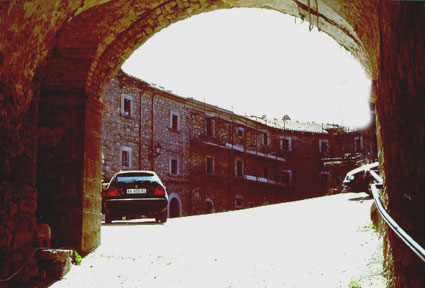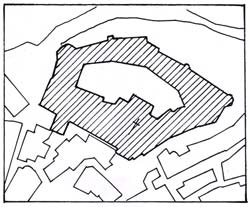![]() Castles
Castles
![]() Fortified burgh of Vastogirardi
Fortified burgh of Vastogirardi
 |
Fortified burgh of Vastogirardi |
The
village, located 1200 meters above sea level near the Celano-Foggia sheep-track,
not far from the source of the river Trigno, is surrounded by pasturelands. In
the Longobard period the village was part of the terra Burellensis,
whose chief town was Pietrabbondante. There are those who claim that the name of
the village originates from the Norman name Girard, a “condottiere”
who took part in the first Crusade.
The layout of the burgh is characterised by a wide central space with an
approximately elliptical shape (it may originally have been used as a sheep pen)
surrounded by very simple dwellings with roofs that slope towards the centre and
with evident modularity of the buildings. The baronial residence, which can be
dated back to a period subsequent to the origins of the burgh, and the later
curtain towers, were integrated in this complex without altering its nature or
balance. The buildings have very thick walls, capable of withstanding the thrust
of the great vaulted structures on the ground floor. There are two entrances
into the courtyard, diametrically opposing each other and situated at different
levels to facilitate the runoff of rainwater. The layout of the burgh is
rendered even more unusual by the presence of the church of Saint Nicholas which
has a sturdy, squat bell tower flanked by a loggia; these buildings project from
the front line of the houses.
A few kilometres from the burgh there are the remains of the small church of St.
Angel, which dates back to the early Middle Ages and was erected on an Italic
temple. Cyclopean walls can be seen on the mountains surrounding the village.
 |
Fortified burgh of Vastogirardi |